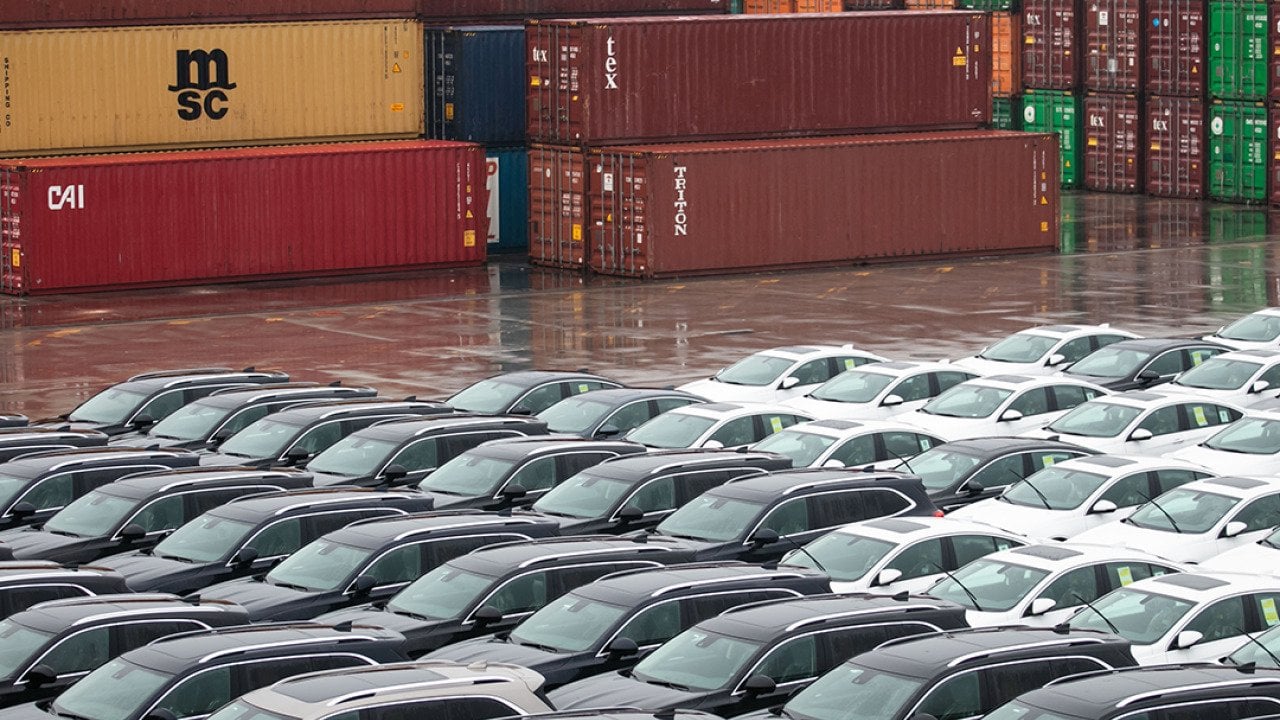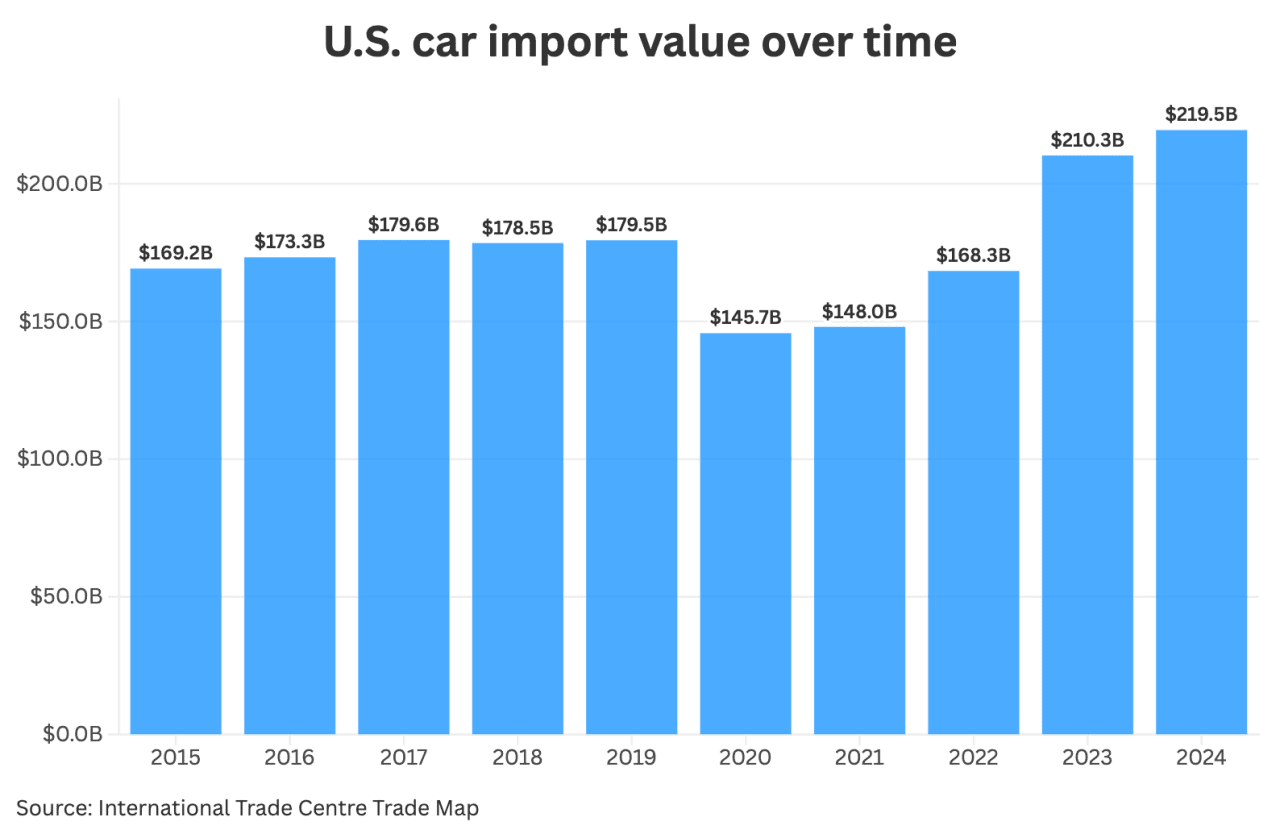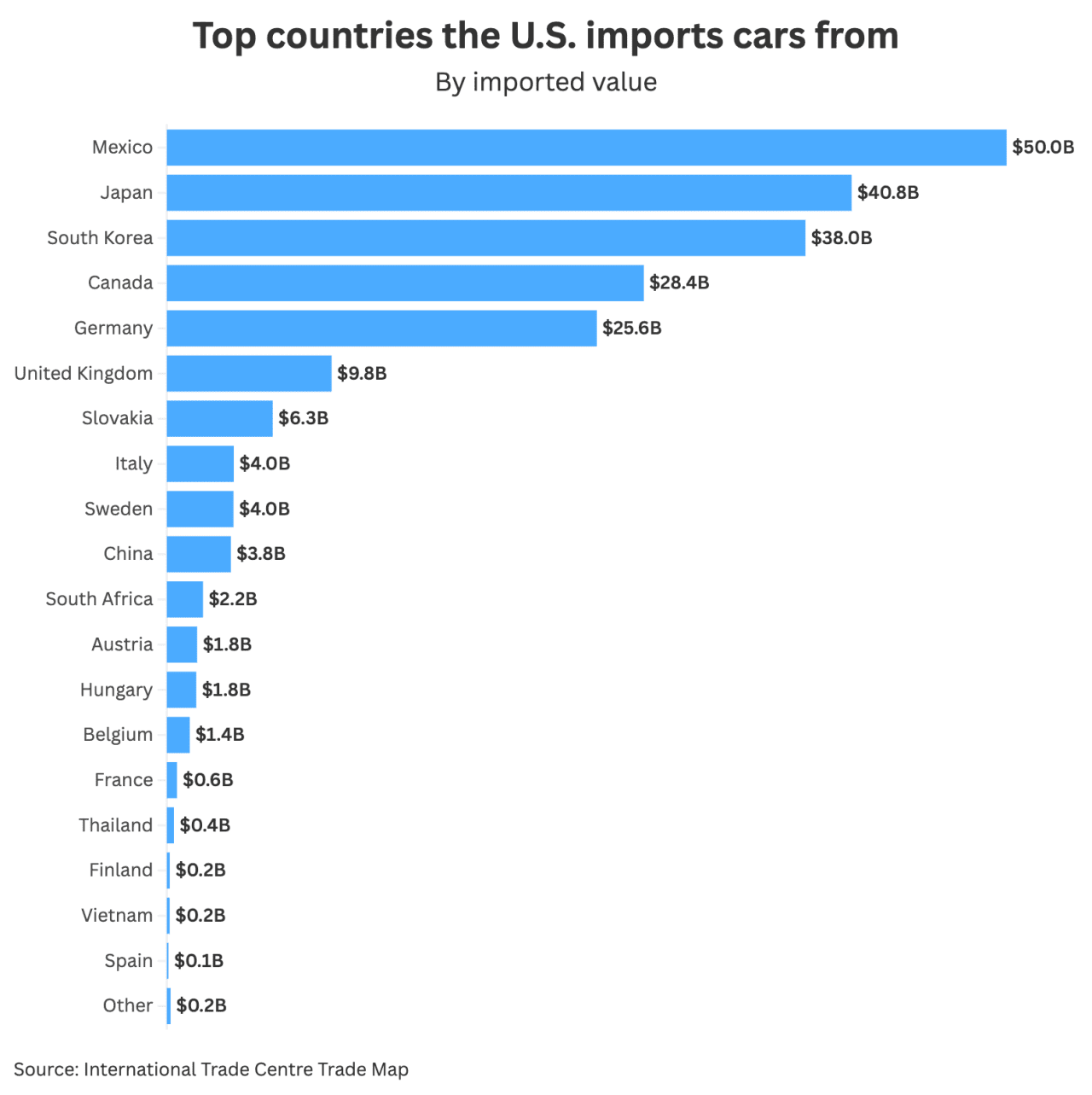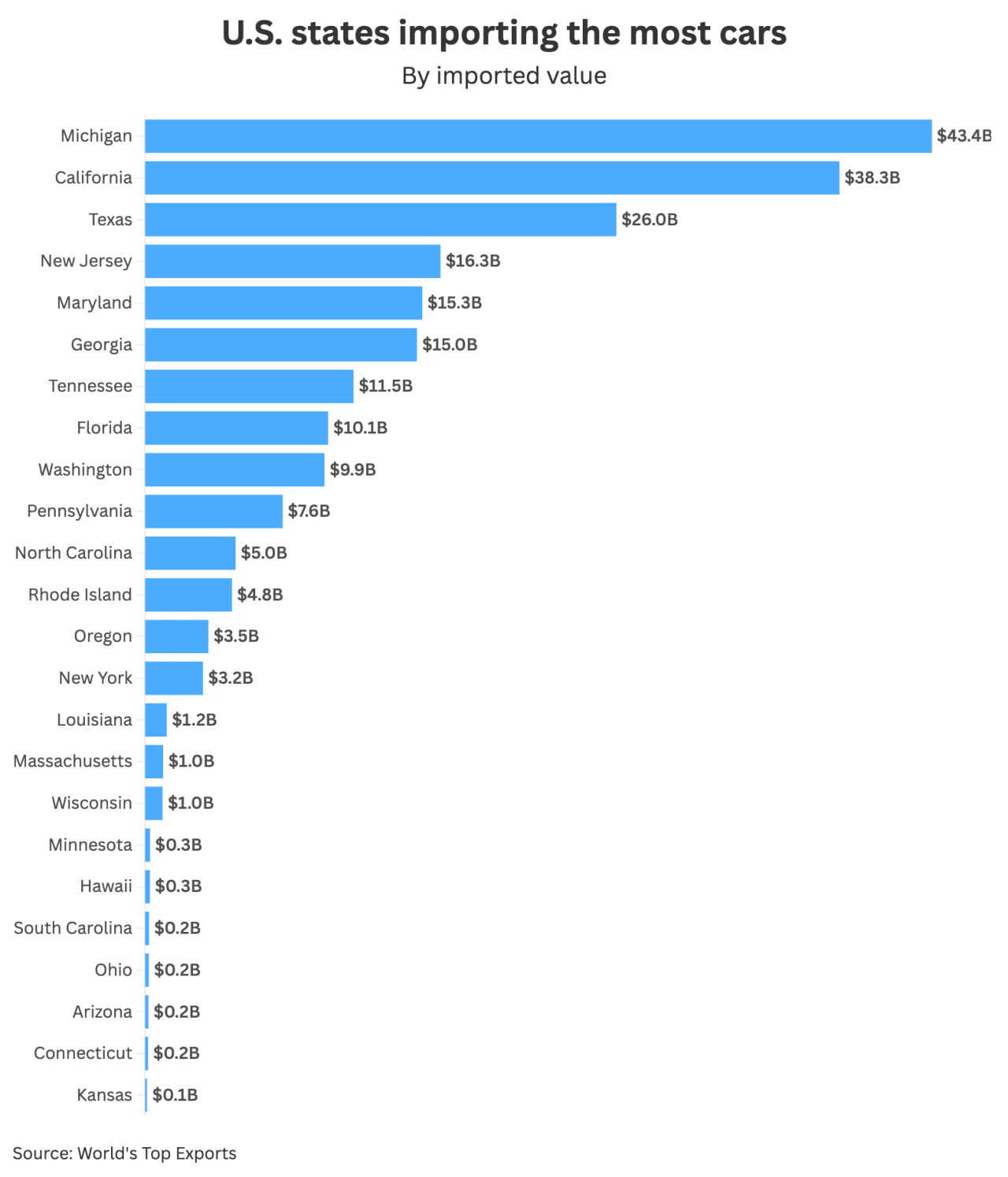US car imports by state: A $219B market under tariff threat

humphery / Shutterstock
US car imports by state: A $219 billion market under tariff threat
Tariffs are back in the news, and that has both American car buyers and automakers watching closely. In 2024, the U.S. imported $219.5 billion in passenger vehicles, up about 4.4% from the year before. As lawmakers weigh new duties on foreign-made cars and parts, the effects could hit hard, especially in top auto-importing states like Michigan, California, and Texas.
Knowing which states import the most vehicles and which countries supply them offers key insight into who’s most exposed to rising prices, delays, or supply chain shifts. In this article, CheapInsurance.com breaks down where imports are concentrated, how major trade partners factor in, and what’s at stake as tariff talk ramps up.
The scale of U.S. car imports
In 2024, the U.S. imported almost $220 billion worth of cars from 84 countries and territories, a 50.6% jump from 2020’s $145.7 billion.

CheapInsurance.com
Total imports hit 7.68 million vehicles, a 4.3% jump from the 7.36 million vehicles imported in 2023. Meanwhile, the U.S. auto trade deficit hit $160.3 billion, signaling continued reliance on foreign-made vehicles even as domestic output grows. The takeaway: Import demand is rising, but so is vulnerability to future tariffs or trade disruptions.
Top source countries for U.S. car imports
Just five countries supply over 83% of all U.S. car imports by value. Mexico leads with $50 billion in exports, or nearly 23% of the total, thanks to its proximity and favorable NAFTA/USMCA terms.
Japan ($40.8B) and South Korea ($38B) follow, driven by strong demand for brands like Toyota, Honda, Hyundai, and Kia. Canada sends $28.4B, while Germany rounds out the top five at $25.6B, led by luxury marques like BMW and Mercedes-Benz.

CheapInsurance.com
The top regions the U.S. imported cars from in 2024 were as follows:
- Asia: 38%
- North America: 35.7%
- Europe: 25.3%
These numbers show how tightly the U.S. auto market is tied to a few key partners, making it highly sensitive to trade shifts.
Top U.S. states for car imports
While the U.S. imported over $200 billion in cars in 2024, that figure wasn’t spread evenly across the country. A handful of states dominated the import landscape, each playing a unique role in funneling foreign-made vehicles into the U.S. market.
According to World’s Top Exports, Michigan led all states with $43.4 billion in car imports, despite a modest 3.3% decline from the previous year. Known as the historic heart of U.S. auto manufacturing, Michigan now serves as both a production base and a distribution hub. Vehicles from Canada and Mexico (its top trade partners) are often routed through the state due to its proximity, infrastructure, and longstanding automotive ecosystem.
California ranked second with $38.3 billion in imports, reflecting an 11.4% increase from 2023. With ports like Los Angeles and Long Beach, California acts as the main gateway for Asian manufacturers such as Toyota, Honda, Hyundai, and Kia. The state’s massive population, environmental policies, and high demand for electric vehicles also boost its import volume.
Texas took third with $26 billion in car imports, though it experienced a notable 18.3% year-over-year drop. Its strategic location along the U.S.–Mexico border makes it a key entry point for North American supply chains, especially for Mexican-made vehicles.

CheapInsurance.com
Other significant players include New Jersey ($16.3B), Maryland ($15.3B), and Georgia ($15B), all states that benefit from robust port infrastructure and serve as major distribution points for the East Coast.
Port capacity plays a crucial role in these trends. In 2024, the Port of New York/New Jersey handled 3.2 million tons of vehicle cargo, compared to 2.3 million for the Port of Los Angeles and 2.1 million tons at the Port of Long Beach, California. Each state’s import role is shaped by geography, trade routes, port capacity, and consumer demand, making them key players in a global supply chain.
Current tariff landscape and recent changes
In early 2025, the U.S. reimposed 25% tariffs on many imported cars and auto parts, targeting products from non-North American countries. These measures took effect on April 3rd, sparking concerns across the auto industry.
Thanks to the USMCA, vehicles with sufficient North American content remain exempt, shielding many imports from Canada and Mexico. That’s provided some protection for states like Michigan and Texas, which depend heavily on cross-border supply chains.
Industry groups warn these tariffs could raise prices, disrupt supply chains, and limit consumer choice, especially for hybrids, EVs, and luxury imports. Even small price hikes can ripple through dealerships, repair shops, and resale markets, impacting millions of drivers. The industry is watching closely as policymakers signal that more trade actions could follow.
How tariffs could hit prices and supply
New tariffs are likely to push car prices higher and cut into supply. Trade analysts say a 25% tariff on imported vehicles and parts could raise average prices by around 5%. For mid-range and luxury cars, which rely more on foreign production, the hike could be even steeper, adding thousands to the final cost.
If tariffs are fully enforced, analysts estimate import volume from outside North America could drop by 73.9%. This is a major shift for an industry heavily tied to Asia and Europe and would reduce options for American buyers seeking models or features not made domestically.
Eighteen percent of total U.S. car sales could be directly affected, mainly imports from Japan, South Korea, and Germany, which supply many high-efficiency and luxury vehicles with few immediate domestic substitutes.
There could be a boost in U.S. manufacturing if automakers try to avoid tariffs by shifting production stateside. But that takes time and capital and won’t offset short-term price increases or supply chain disruptions.
What it means for buyers and states
New tariffs are already driving up prices and shaking supply chains, especially for foreign-made models. Buyers should expect higher costs, longer wait times, and fewer options in the short term.
Some states may benefit. South Carolina, Alabama, and Tennessee, home to U.S. plants for BMW, Hyundai, and Nissan, could gain if automakers shift more production domestically. Texas may hold steady thanks to strong ties with Mexico and a local manufacturing base. However, California, which leans heavily on Asian imports, may see sharper price jumps and inventory gaps.
Michigan could land in the middle. It’s a top importer and a manufacturing hub, so the impact depends on how much domestic production offsets lost imports. For consumers, the best move is to shop for U.S.-built or used cars and plan for higher sticker prices across the board.
This story was produced by CheapInsurance.com and reviewed and distributed by Stacker.
![]()



